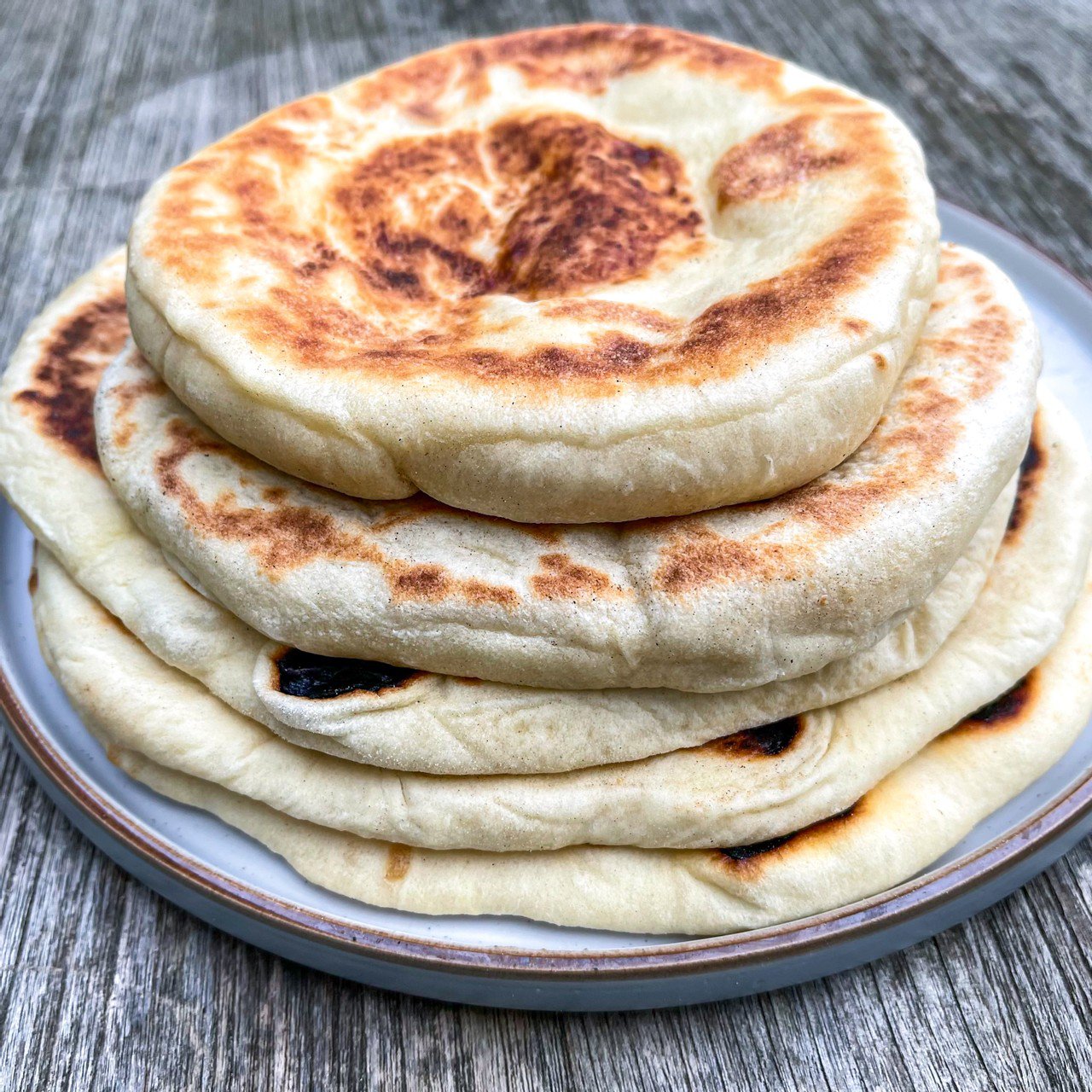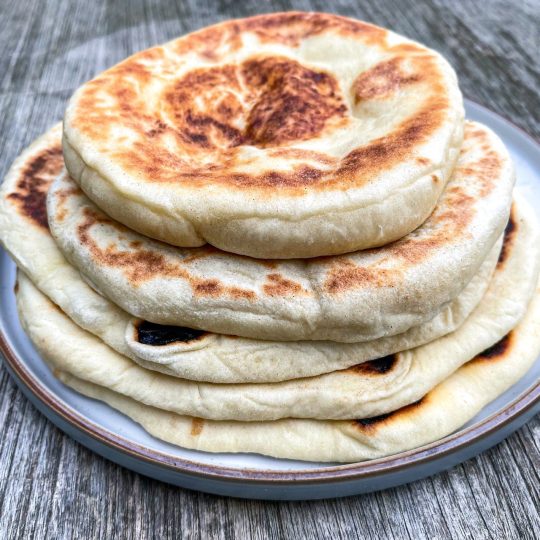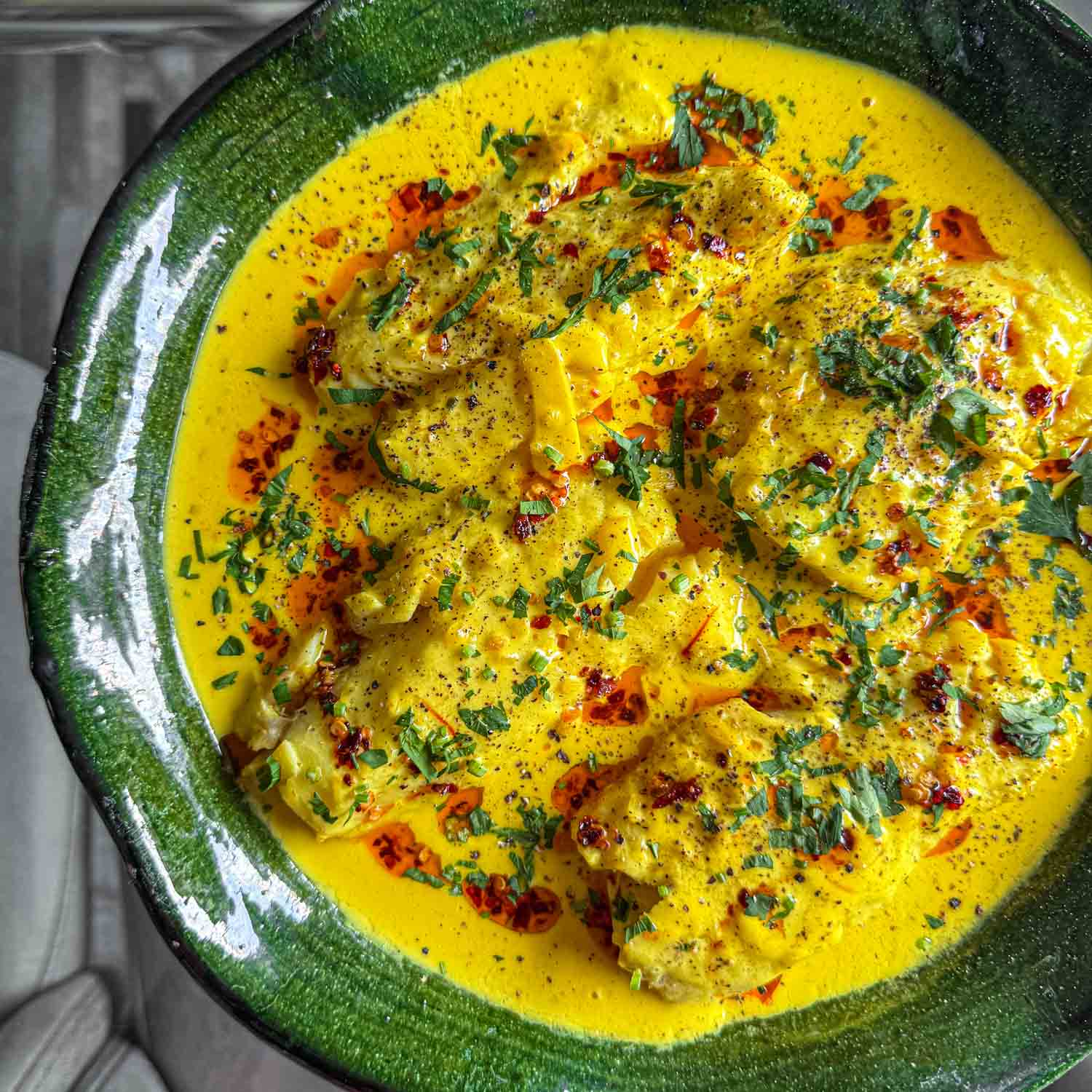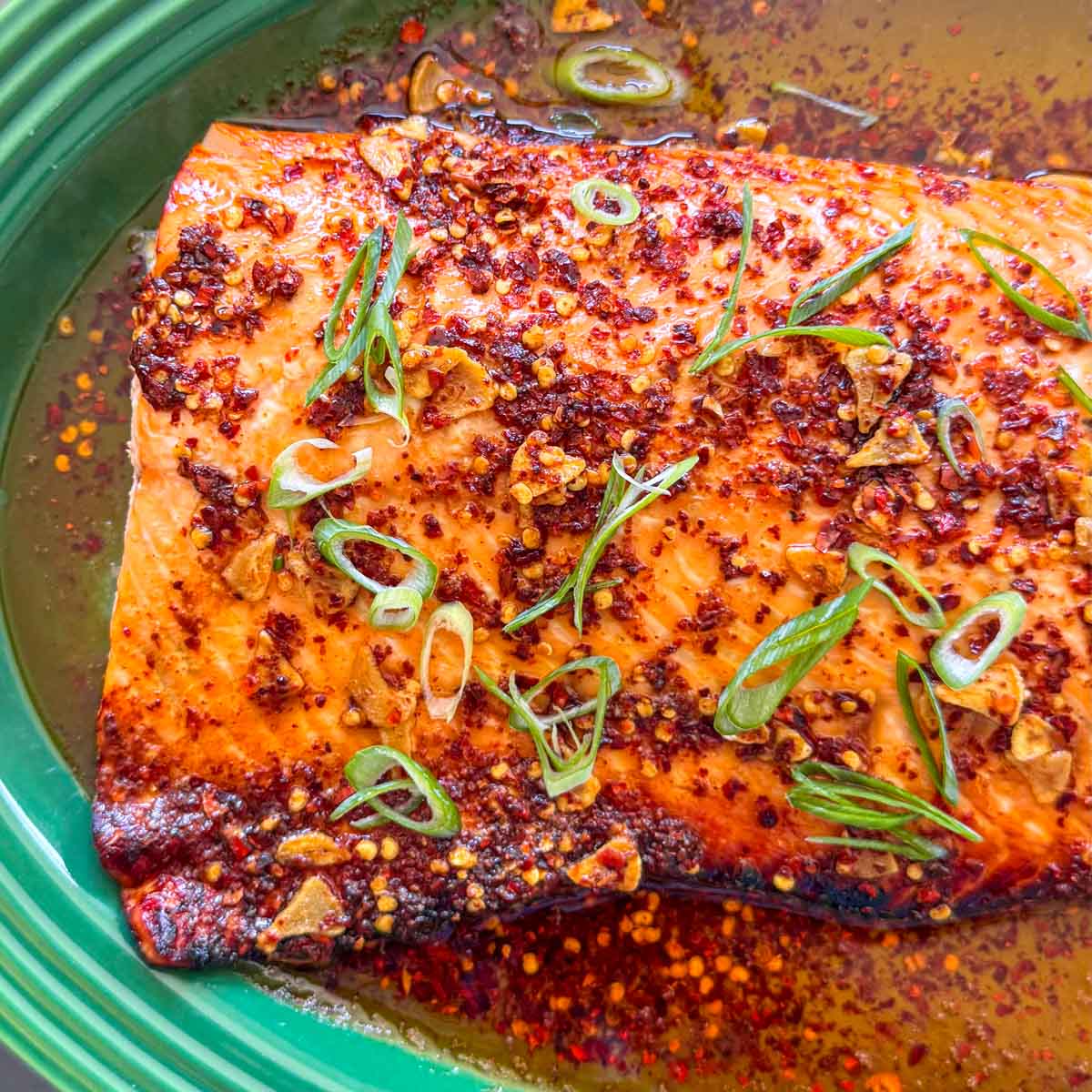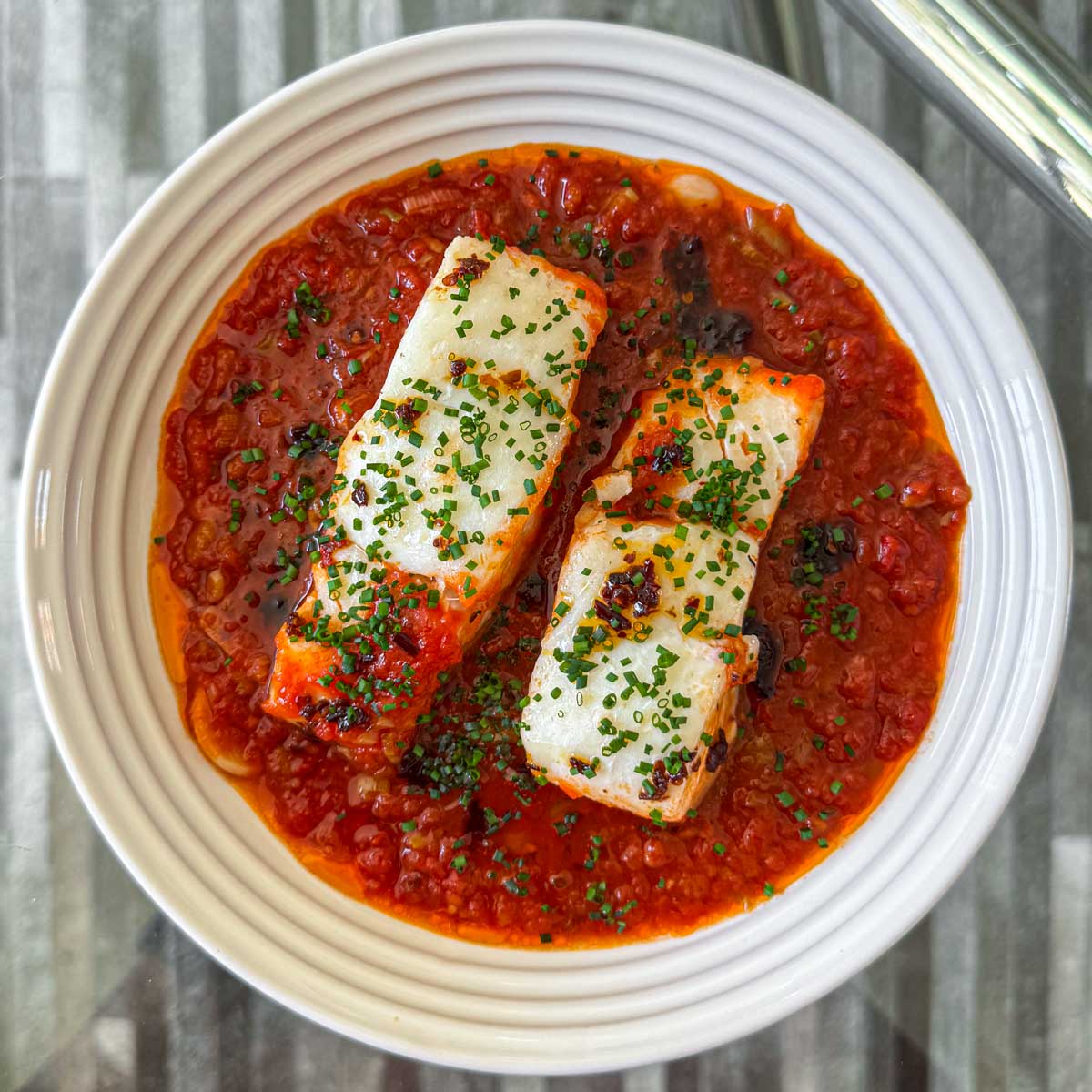Few things in the kitchen are as satisfying as pulling freshly baked bread out of the oven and these homemade Flatbreads, with their soft, pillowy texture and slightly chewy bite, are a perfect example. They’re ideal for serving with dips, grilled meats, soups, and curries, or even for turning into flatbread pizzas. The versatility of these Turkish-style flatbreads makes them a kitchen staple that you’ll return to time and time again. This easy-to-follow recipe guides you through creating these delicious flatbreads from scratch, with simple ingredients that transform into something truly special.
Table of Contents
- Ingredient Breakdown
- Why Choose Homemade Flatbreads?
- Mastering the Dough
- The Resting Time: Why Patience Pays Off
- Cooking the Flatbreads
- More Bread Based Recipes
Ingredient Breakdown
- Fast action dried yeast: Essential for the rise, this yeast helps the dough puff up and become soft.
- White granulated sugar: Provides a bit of sweetness and feeds the yeast, aiding the fermentation process.
- Warm water: Activates the yeast, helping it to bloom and start the leavening process.
- Full-fat Greek yoghurt: Adds richness and moisture to the dough, contributing to its soft and pillowy texture.
- Extra-virgin olive oil: Gives the dough a subtle depth of flavour and makes the texture smooth and easy to work with.
- Fine sea salt: Enhances the flavour of the bread and helps regulate the yeast activity.
- Plain flour: The main structure of the dough, providing the necessary elasticity and chewiness for the flatbreads.
Why Choose Homemade Flatbreads?
Homemade Flatbreads offer something store-bought varieties simply can’t: freshness. The beauty of these flatbreads lies in their simplicity and the opportunity to control every element of the dough. Unlike shop-bought options, which may include preservatives and artificial ingredients, making flatbread at home means you can enjoy an authentic, clean product. The process, while requiring some time, is relatively hands-off. With just a bit of kneading and waiting for the dough to rise, you’ll have Flatbreads in no time. The result is soft, warm flatbreads with a light, airy texture that makes every meal feel like an occasion.
Not only are homemade flatbreads delicious, but they’re also incredibly versatile. You can serve them alongside Mediterranean-style dips like hummus, tzatziki, or baba ganoush. Or you can pair them with rich and hearty stews and curries. Their mild flavour complements almost any dish, making them perfect for nearly every occasion. Plus, you can transform them into flatbread pizzas for a quick and satisfying meal, allowing you to get creative with your toppings.
Mastering the Dough
The key to achieving the perfect Flatbread texture is all in the dough. The addition of Greek yoghurt makes the dough soft, while the right balance of ingredients creates the ideal chewy, tender bite. When mixing the ingredients, it’s crucial to allow the dough to come together gently. Start by whisking the yeast, sugar, and warm water. This step activates the yeast, ensuring a good rise. If the mixture doesn’t become foamy after 5–10 minutes, it’s a sign that the yeast may be expired or inactive, and you’ll need to start over.
Once the yeast mixture is foamy, incorporate the Greek yoghurt, olive oil, and salt into the dough. This combination not only contributes to a delicate texture but also adds a subtle richness. When adding the flour, you should aim for a dough that’s slightly shaggy and a bit sticky. As you knead the dough, sprinkle in additional flour as needed to create a smooth, elastic texture. After kneading, the dough should spring back when lightly pressed. This is a sign that the gluten has developed properly, ensuring a soft, chewy flatbread.
The Resting Time: Why Patience Pays Off
Resting the dough is a crucial step in achieving that perfect, soft texture. After the initial kneading, place the dough in an oiled bowl and cover it with cling film to prevent it from drying out. Allow the dough to rise for 1 ½ to 2 hours, or until it doubles in size. This resting period gives the yeast time to work its magic, producing air bubbles that make the dough rise and develop flavour. It’s during this period that the dough’s texture transforms from dense and sticky to light and airy.
Once the dough has risen, gently punch it down to expel the air and redistribute the yeast for an even rise. Knead it lightly to further deflate the dough, ensuring that it’s not overworked. At this point, you can divide the dough into 9 portions and allow each portion to rise for a further 15 minutes. This secondary rest helps ensure that your flatbreads are perfectly light and airy when you roll them out. This extra step makes a world of difference, so don’t rush through it.
Cooking the Flatbreads
Cooking the Flatbreads requires a bit of attention, but it’s incredibly rewarding. You’ll want to use a cast iron skillet or a non-stick frying pan over medium-high heat for the best results. The pan should be dry, no oil or butter is necessary. Place the dough into the hot pan and cook until brown spots begin to appear on the bottom, and the surface starts to form air pockets. This will take around a minute. Then, flip the flatbread over, allowing it to puff up further and develop a beautiful golden colour on both sides.
Once cooked, wrap the flatbread in a clean tea towel to keep it warm and soft while you prepare the rest. The towel traps the heat and moisture, preventing the flatbreads from drying out. This technique ensures that all the flatbreads stay soft, making them perfect for serving in a group setting. If you’re not eating them immediately, wrap the flatbreads in clingfilm or store them in an airtight container to keep them fresh.
More Bread Based Recipes
If you enjoyed making these Flatbreads, why not try your hand at a few other bread based recipes I have:
- No-Knead Focaccia: This no-knead focaccia is so easy to make and you don’t need any fancy equipment. Perfectly crisp on the outside and soft and light on the inside.
- Garlic Rolls: These buttery, pull-apart garlic rolls are super soft and pillowy, slathered with a delicious homemade garlic herb butter and baked until nice and golden.
- New York Style Bagels: Crunchy on the outside and perfectly chewy in the middle, these homemade bagels are easier to make than you might think. They just take a little bit of time, which makes them perfect for a weekend baking project.
See how I make all these recipes and more over on my Instagram!
Flatbreads
5 Stars 4 Stars 3 Stars 2 Stars 1 Star
No reviews
Nothing beats the taste and smell of freshly baked bread! These Turkish-style flatbreads are soft and pillowy, with the perfect amount of chew. They’re so versatile. Serve them with your favourite dips, salads and/or grilled meats, make flatbread pizzas with them, serve them alongside soups and curries – the possibilities are endless!
- Prep Time: 20 minutes
- Total Time: 2 hours 40 minutes
- Yield: 9 1x
- Category: Bread
Ingredients
- 18 g fast action dried yeast (active dried yeast)
- 15 g white granulated sugar
- 250 ml warm water
- 150 g full-fat Greek yoghurt
- 3 tbsps extra-virgin olive oil, plus more for greasing the bowl
- 18 g fine sea salt
- 700 g plain flour, plus more for kneading and rolling
Instructions
- Whisk the yeast, sugar and warm water in a large bowl and let sit for 5 to 10 minutes. It should get foamy and bubbly. If it doesn’t, your yeast is dead and you’ll need to start again with fresher yeast.
- Whisk in the Greek yoghurt, extra-virgin olive oil and salt. Add the flour and mix with a rubber spatula or wooden spoon until the dough comes together in a shaggy mass.
- Turn the dough out onto a floured work surface. Knead the dough, dusting with plain flour as needed, until smooth, elastic and no longer sticky, around 5 to 7 minutes. The dough should spring back slowly when lightly pressed.
- Lightly grease a large bowl with extra-virgin olive oil. Shape the dough into a ball then transfer it to the oiled bowl. Roll the dough so it’s lightly covered in oil to prevent it from drying out. Cover the bowl with cling film. Let sit in a warm place for 1 ½ to 2 hours, or until doubled in size.
- Punch down the dough to expel the air. Turn the dough out onto a floured work surface and knead for 1 minute to further deflate the dough.
- Roll the dough into a log and divide it into 9 portions. Roll each portion into a ball and press lightly to flatten. Cover with a damp cloth and let sit for 15 minutes to rise further.
- Flatten one dough ball with your hands to expel the air. Using a floured rolling pin, roll the dough into a 1 cm thick (approx.) disk. Repeat with the remaining dough balls. Cover with a damp cloth and let sit 15 minutes.
- Heat a cast iron skillet or non-stick frying pan over medium-high heat. Once heated, add one of the flatbreads to the pan – no butter or oil necessary. Let the flatbread cook undisturbed until brown spots begin to appear on the bottom and there are air pockets on the surface, around 1 minute. Flip using a spatula and cook another minute until puffed up and browned on the other side.
- Transfer to a clean tea towel and wrap it up to keep warm while you make the rest. Repeat with the remaining flatbreads. Serve warm and enjoy!
- To store: wrap in clingfilm or store in an airtight container.
- To reheat: reheat in a dry pan on medium/medium-low heat for a minute or two on each side or wrap in kitchen towel and heat in the microwave on lower power until warmed through.
